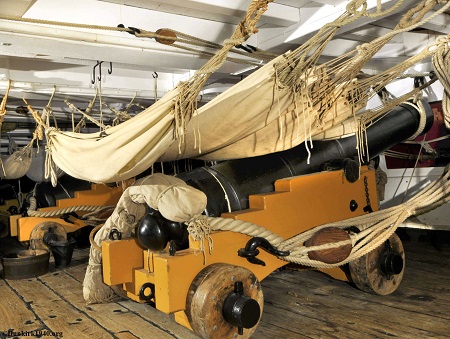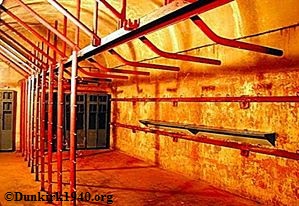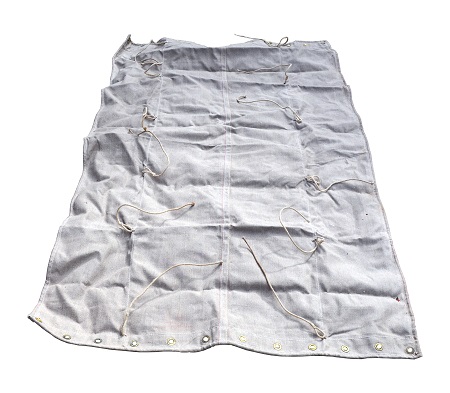The story of the hammock is one which goes back over 1,000 years. While it is not possible to definitively assert its origins, it can be agreed that the modern hammock is, along with its name, derived from South and Central America. People used the bark of the Hamak tree, which was eventually replaced with sisal. Sisal was chosen mainly because it was easier to work than Hamak bark. The use of cotton in the manufacture of hammocks is relatively recent.

Hammocks on one of the main gun decks of HMS Victory.
The British and French navies led the way in adopting the hammock aboard their fleets. The concept behind the adoption of the hammock was a sensible one. As the ship pitched and rolled at sea, the occupant was largely protected against the worst excesses of this movement as the hammock would move in cadence.

Royal Naval Rating aboard HMS Rodney with his hammock in 1940.

Hammocks on one of the main gun decks of HMS Victory.
The British and French navies led the way in adopting the hammock aboard their fleets. The concept behind the adoption of the hammock was a sensible one. As the ship pitched and rolled at sea, the occupant was largely protected against the worst excesses of this movement as the hammock would move in cadence.

Royal Naval Rating aboard HMS Rodney with his hammock in 1940.

Storage bag for the French Naval Hammock.
The term 'shake a leg' originated from the Nelsonian-era Royal Navy, when it was common practice for female 'visitors' to be entertained by the crew when in port. Essentially, if a woman's leg was shown from the hammock the sailor was granted an additional period of grace to his call to the change of the watch. During engagements at sea, the hammocks were stowed along the top of the ship's rails in specially -constructed 'baskets'. These acted as protection for the crews on deck from the effects of cannon and small arms fire, as well as being able to float free in the event of the ship's demise, thus offering survivors a ready source of flotation devices while in the water. The greater reality was that in most cases the hammock would simply be returned, albiet with some new ventilation!

Barrack room for hammocks in the Petit Ouvrage Rohrbach les Bitches.
 Set of ropes for the hammock.
Set of ropes for the hammock.When the Maginot Line was constructed, the officers were sent to the submarine branch of the French Navy to help them acclimatise to working in restricted conditions. The forts were often compared to a battle ship buried in the earth! Another aspect of the naval influence on the Maginot Line was the use of hammocks in the forts' subterranean barracks. The hammocks are a more common feature of the later 'Nouveaux Fronts' forts (the budget restricted the second phase of construction between 1936-1938). Hammocks provided a low-cost solution to the provision of beds within the barracks.

The main canvas of the hammock.
To return to the War at Sea pages, click here.
To return to the Maginot pages, click here.
To return to the Maginot pages, click here.
